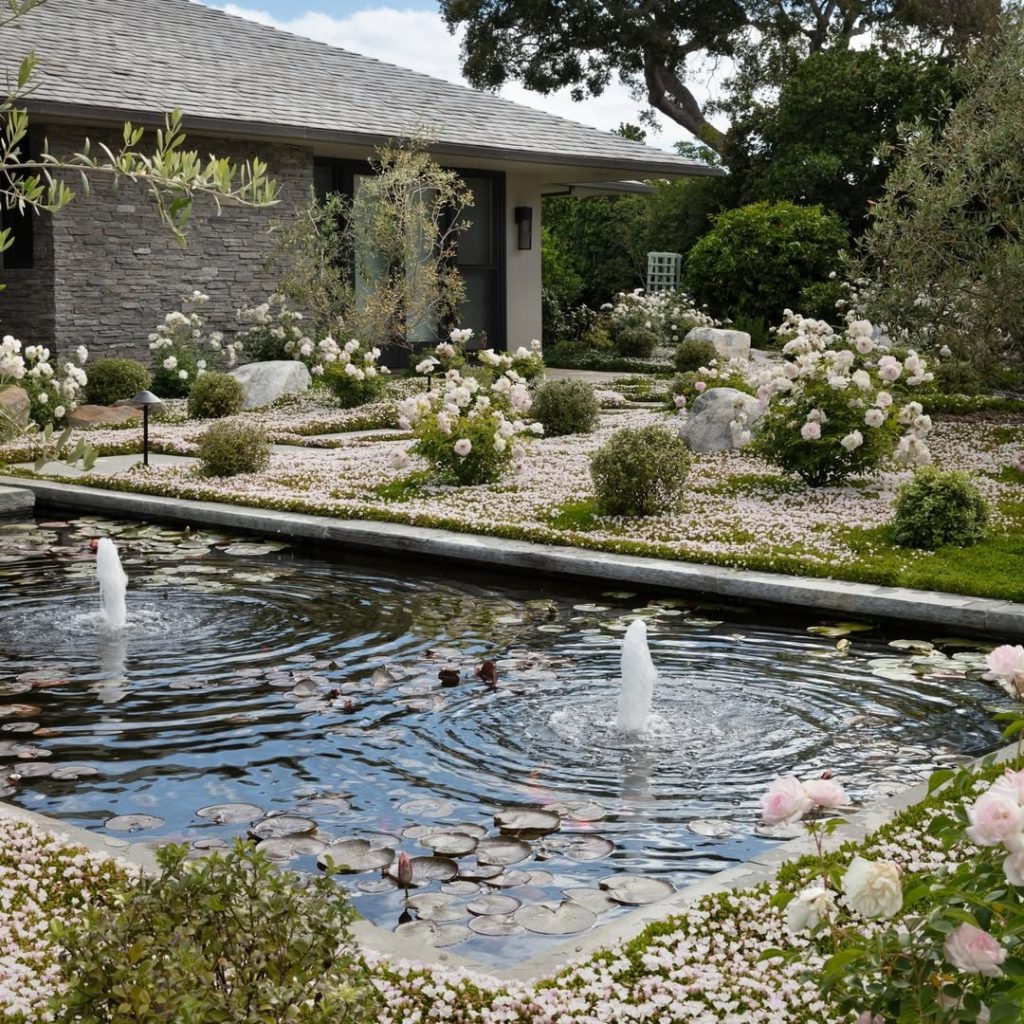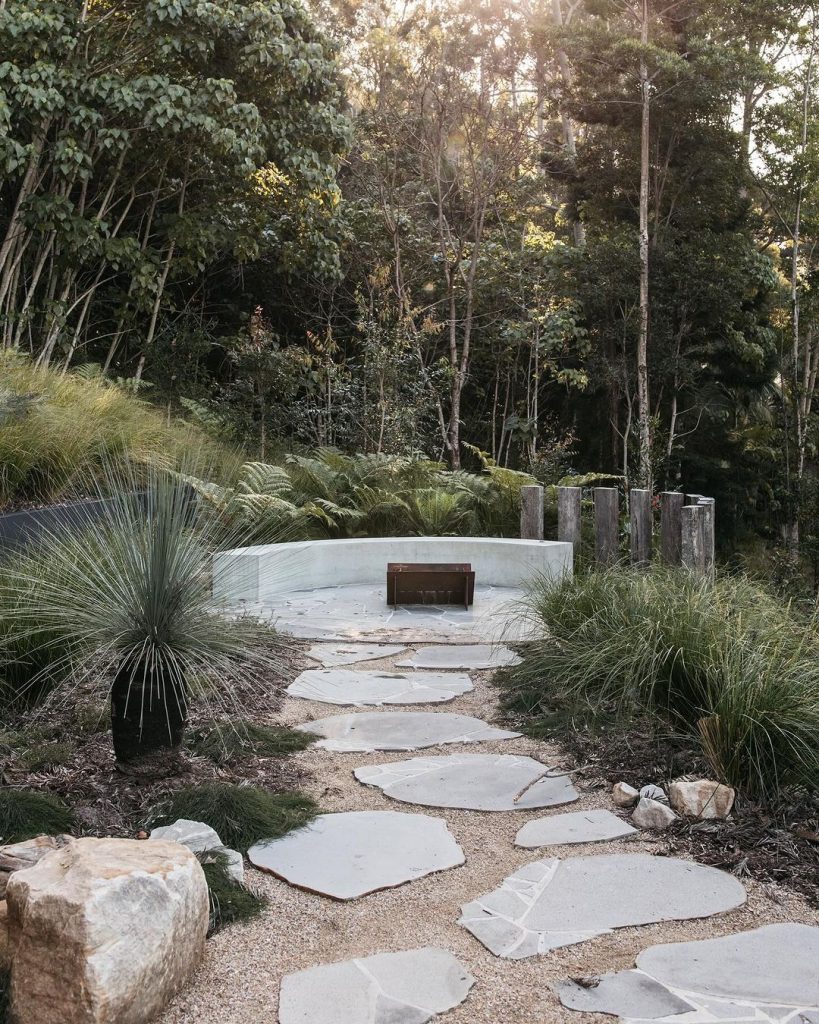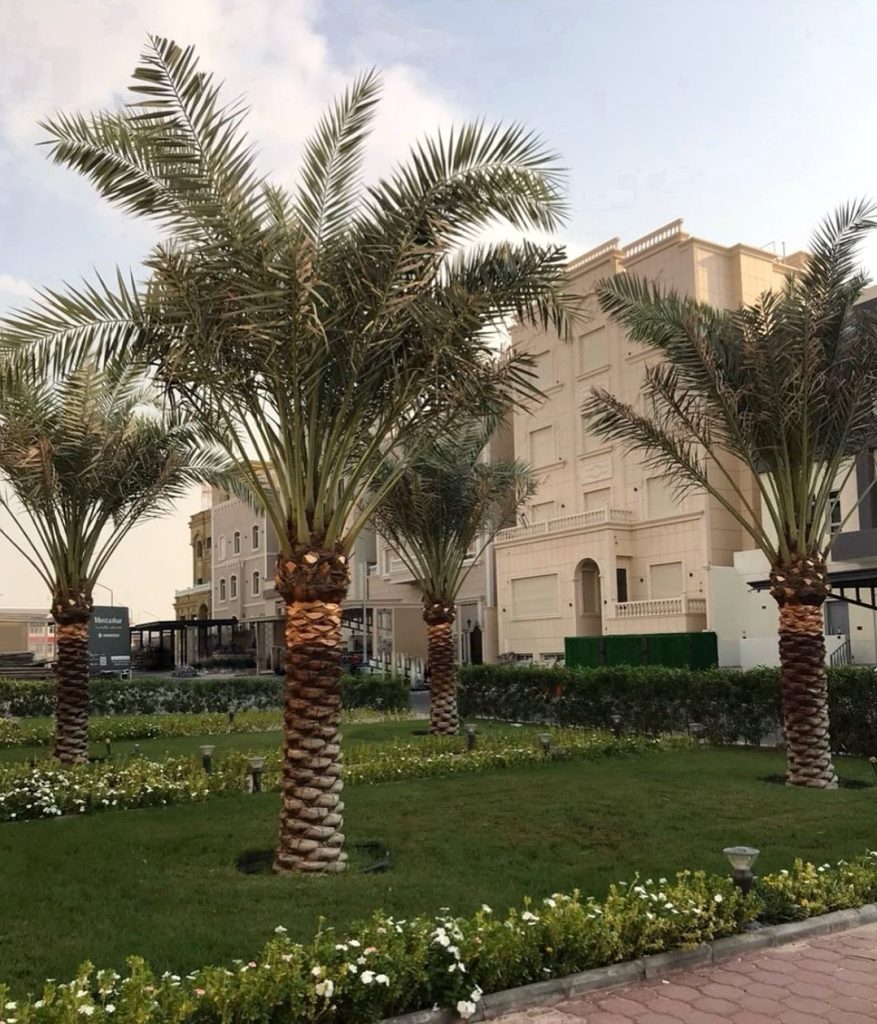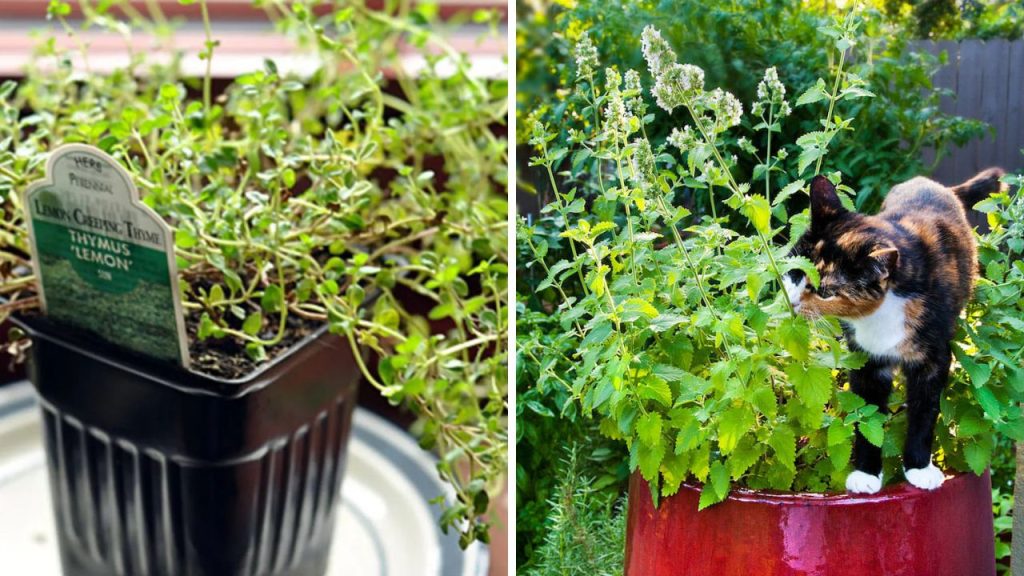Creating a shade garden can transform a quiet, cool corner of your yard into a lush and serene retreat. Whether you’re looking to create a peaceful space to relax, or you simply want to make the most of your shaded areas, this guide will provide you with 19 innovative shade garden ideas to enhance your outdoor living space. These ideas are perfect for anyone, from beginner gardeners to seasoned pros, especially those with less sun exposure in their yards.
Here are some shade garden ideas that will turn your outdoor space into a cool haven.
1. Layered Planting for Depth and Texture

Layered planting involves arranging plants in multiple tiers to create a rich, textured look. In a shaded garden, this is particularly effective as it allows you to utilize the varying heights and shapes of plants to create depth in an otherwise flat space. Start by planting tall shrubs or small trees at the back, such as ferns or hostas, which thrive in shade. Then, place medium-height plants like astilbes or bleeding hearts in the middle layer, followed by lower-growing ground covers such as moss or creeping thyme.
This approach helps create visual interest by drawing the eye in multiple directions. The different textures from leaves, flowers, and grasses will create movement and vibrancy in a garden that may otherwise feel dull due to the lack of direct sunlight. Layered planting also helps with managing moisture, as larger plants can provide shade for smaller, more delicate plants.
2. Add a Water Feature

Water features can bring a sense of tranquility and relaxation to any garden, and they can be especially effective in shaded gardens where the foliage creates a peaceful, cool environment. A small pond, a trickling fountain, or even a birdbath can serve as the focal point of your shade garden, providing soothing sounds of running water that add to the atmosphere.
For a touch of elegance, you can add water-loving plants around the feature, such as water lilies or hostas, which thrive in damp conditions. You can also include stones, pebbles, or even some aquatic plants like ferns and moss to complete the look.
3. Create a Path with Stepping Stones

Incorporating a stepping stone path into your shade garden not only adds functionality but also enhances the beauty of your garden design. Stepping stones can guide visitors through your garden, drawing attention to certain plants or areas, and making the space feel more inviting.
Choose natural stones, such as slate, or go with rustic flagstones for a more earthy vibe. Add moss, low-growing ferns, or creeping thyme between the stones to blend the path into your garden seamlessly. This idea helps create a whimsical and serene feel, encouraging exploration while maintaining a calming environment.
4. Use Tall Plants as Vertical Focal Points

Shaded areas can benefit from tall plants that add height and structure to your garden. Consider planting tall, architectural plants such as bamboo, Japanese blood grass, or ornamental grasses. These plants not only grow well in shade but also create vertical interest, which is essential in breaking up flat, uninteresting spaces.
You can place them near the edges of the garden or against a trellis for a more dramatic effect. These vertical plants also provide privacy and shelter, creating a secluded, intimate atmosphere in your outdoor space.
5. Embrace the Elegance of Ferns
Source
Ferns are a classic choice for shade gardens, as they naturally thrive in low-light conditions. Their feathery, delicate fronds add texture and movement to the garden. There are many different types of ferns to choose from, including maidenhair ferns, lady ferns, and ostrich ferns.
Ferns can be placed in shady corners, along paths, or even in hanging baskets to create a soft, romantic ambiance. The unique texture of ferns contrasts beautifully with other plants in the garden, especially when paired with bold, leafy foliage or flowering plants like astilbes or primroses.
6. Incorporate Shade-Loving Flowers
Source
Though many people assume that flowers can’t thrive in the shade, several shade-loving varieties are perfect for creating a colorful, vibrant garden. Plants like astilbes, columbine, and impatiens flourish in low-light environments and add a burst of color to your garden.
These flowers will do well under the canopy of trees or beside structures that limit sunlight, and they come in various hues, from soft pastels to vibrant reds and purples. Grouping them together in shaded areas will provide plenty of color contrast while maintaining a natural and balanced look.
7. Add Garden Statues or Sculptures
Source
Adding decorative garden statues or sculptures can be a great way to give your shade garden a personal touch. Whether you prefer whimsical fairies, majestic animals, or abstract sculptures, these artistic pieces can enhance the tranquility and beauty of your garden.
Position your statues near shady spots where they’ll subtly blend into the landscape. The light filtering through the trees can cast intriguing shadows on the sculptures, adding to the mystique of the space. This element helps elevate the overall aesthetic while offering a point of interest in the garden.
8. Create a Shady Reading Nook
Source
Why not take advantage of the cool, peaceful atmosphere of a shade garden by creating a cozy reading nook? Select a corner of your garden or under a tree, and place a comfortable chair or hammock in this spot. Surround it with plants like ferns, hostas, and lavender, and you’ll have a perfect, serene retreat for reading or relaxing.
Adding a small table for a cup of tea or a glass of wine can complete the space. Consider placing a soft rug underfoot and hanging twinkling lights or lanterns overhead for an extra touch of charm. This shaded nook will offer a much-needed escape from the stresses of daily life.
9. Combine Evergreens for Year-Round Interest
Source
Evergreen plants are an essential component of shade gardens as they provide year-round greenery and interest. Varieties such as boxwoods, yews, and holly offer structure and a timeless quality that can complement the softer textures of other shade-loving plants.
Incorporate these evergreens in the background or along the edges of your garden for a natural boundary. Their foliage will remain lush throughout the seasons, giving your garden an evergreen backdrop while allowing the seasonal flowering plants in front to shine. This creates an appealing contrast between the evergreen and the ever-changing blooms.
10. Create a Shaded Patio or Deck Area
Source
Transform your patio or deck area into a shaded retreat by adding a pergola, awning, or shade sails. These structures allow you to enjoy your outdoor space even during the hottest summer days, providing shelter from the sun and creating a comfortable area for dining or relaxing.
Surround your shaded patio with plants that thrive in low-light conditions, such as hostas, astilbes, and ferns. This area can become your go-to place for dining outdoors, enjoying a glass of wine, or hosting friends and family in a cool, inviting environment.
11. Use Moss as a Ground Cover
Source
Moss is a naturally shade-loving plant that thrives in cool, damp environments. It makes an excellent ground cover for shady areas and lends a lush, velvety texture that feels magical and ancient. Moss grows low to the ground and doesn’t require mowing, making it a low-maintenance alternative to grass in heavily shaded areas.
You can plant moss between pavers, along garden borders, or even across an entire shaded patch. It creates a soft, cushiony carpet that invites barefoot walks and adds a serene, woodland atmosphere. Plus, moss is incredibly resilient and helps retain moisture in your garden, benefiting nearby plants as well.
Moss also contributes to erosion control on slopes or hillsides where shade makes it difficult to grow grass or other ground covers. Its ability to thrive in less-than-ideal conditions makes it a perfect solution for those tricky spots in your yard.
12. Hang Baskets and Wall Planters
Source
When horizontal space is limited or already filled, take advantage of vertical areas with hanging baskets and wall planters. These are ideal for brightening up fences, shaded porches, or the sides of garden sheds. You can use a mix of trailing and upright plants that do well in shade, such as fuchsias, begonias, ivy, or coleus.
This approach not only adds layers of interest to your garden but also allows you to experiment with color and texture in a small footprint. Hanging baskets bring eye-level beauty into shaded areas and create a charming, cottage-garden feel.
Wall planters, meanwhile, can be used to form living walls—an excellent way to create privacy in outdoor living spaces while keeping everything lush and low-maintenance. Make sure to choose containers that allow for adequate drainage, and rotate your plantings seasonally for continuous appeal.
13. Add Outdoor Lighting for Ambience
Source
Shade gardens naturally have a dim, cozy vibe, but adding strategic lighting can elevate the space and extend its usability into the evening. Consider incorporating solar-powered path lights, hanging string lights, or even LED spotlights to highlight your favorite plants and garden features.
Soft, warm lighting tucked among ferns or beneath a pergola can make your garden feel enchanting. Uplighting trees or shrubs creates dramatic shadows and enhances vertical elements. Meanwhile, lanterns or fairy lights can add a whimsical charm that perfectly complements the tranquil, cool nature of a shade garden.
Lighting also adds a practical safety element to your outdoor decor. It helps define walkways and patios, making nighttime navigation easy while still preserving the natural ambiance.
14. Grow Edible Plants That Tolerate Shade
Source
Believe it or not, you can grow certain fruits, vegetables, and herbs in shady conditions. While full sun is ideal for most edibles, there are several shade-tolerant options perfect for garden-to-table enjoyment. Try growing leafy greens like spinach, arugula, lettuce, and Swiss chard, which all perform well in partial shade.
Other good choices include herbs like mint, parsley, chives, and cilantro. These not only thrive in shadier spots but also bring fragrance and flavor to your garden. For fruits, consider shade-tolerant options like blackberries or currants.
Incorporating edibles into your shade garden is a smart way to get the most use out of your space. Raised garden beds or containers in shaded areas near your home make harvesting easy and contribute to a modern back porch decor that’s both beautiful and functional.
15. Mix Textures with Variegated Foliage
Source
In a shade garden where flowers might be limited, foliage takes center stage. One of the best ways to add interest is by incorporating plants with variegated leaves. These plants offer a mix of colors, like greens with whites, yellows, or even pinks, which can brighten up darker areas.
Try plants like variegated hostas, lungwort, or deadnettle for eye-catching foliage. The variety of leaf shapes—whether broad, heart-shaped, or trailing—also helps create texture and movement in your garden design.
Combining multiple types of variegated plants creates a layered, artistic look that keeps the garden visually engaging all season long. When arranged properly, they also help draw the eye to focal points, whether that’s a garden bench, a statue, or a shady seating area.
16. Build a Woodland-Style Border
Source
A woodland garden theme is a natural match for shaded environments. You can create a border that mimics a forest floor by incorporating native plants, fallen logs, bark mulch, and leaf litter. Think low-maintenance and natural: ferns, trillium, wild ginger, and solomon’s seal all work beautifully here.
This style is perfect for the edges of properties or under mature trees, where full sunlight is limited. Instead of fighting the shade, this idea allows you to work with it, turning a problem area into a peaceful sanctuary.
Adding a curved edge and grouping plants in organic clusters helps replicate the look of a true forest. Include a rustic bench, and you’ve got a charming space to reflect and relax that fits seamlessly into a natural outdoor living style.
17. Decorate with Shade-Tolerant Potted Plants
Source
Container gardening is an easy way to bring life to your shaded spaces—especially patios, decks, or small corners of your yard. Large containers filled with shade-tolerant plants like caladiums, begonias, coleus, and elephant ears can instantly liven up an area that might otherwise go unnoticed.
Containers also allow for greater flexibility. You can move them around to find the perfect lighting, rotate seasonal plantings, and even change out your garden color scheme without digging into the soil. Use modern patio containers in natural stone or minimalist ceramics to keep things stylish and contemporary.
Group pots together in odd numbers to make a visual impact, and consider using stands to vary the height for added interest. This is a great way to blend modern back porch ideas into your garden design while keeping things dynamic and fresh.
18. Incorporate a Garden Bench or Swing
Source
Sometimes the best way to enjoy your shade garden is to simply sit and soak it all in. Adding a garden bench or swing gives you a designated place to relax, unwind, or chat with a friend. Nestled among ferns or flowering shade plants, a bench becomes more than furniture—it becomes an experience.
Choose a style that fits your garden’s aesthetic. Wooden benches work beautifully in woodland-themed gardens, while wrought iron or sleek metal swings can complement modern patio furniture styles. Enhance the area with soft cushions, hanging lanterns, or a nearby water feature for a cozy and welcoming feel.
Position the bench to take in the best views of your garden. This creates a focal point and encourages you and your guests to linger longer in this tranquil, shaded paradise.
19. Frame with Trellises and Arbors
Source
Trellises and arbors are not just structural additions—they can define the space and serve as vertical canvases for climbing plants like clematis, ivy, or hydrangeas. These elements help break up the space and create zones within your shade garden, offering structure and visual balance.
A well-placed arbor can frame a path or entrance and create a magical sense of transition. Meanwhile, trellises can provide privacy while still allowing airflow and filtered light to enter. Both offer excellent support for shade-loving vines that add vertical interest and seasonal color.
Paint your trellises to match your outdoor decor or let them weather naturally for a rustic vibe. Either way, they’ll add instant charm and function to your shaded sanctuary.
Conclusion: Make the Most of Your Shade Garden
Shaded spaces in your yard don’t have to be overlooked. With a little creativity and thoughtful design, they can become the most beautiful and relaxing areas in your outdoor living space. Whether you’re adding cozy seating, elegant water features, or vibrant shade-loving plants, these 19 shade garden ideas are designed to inspire and transform.
From modern back porch ideas to lush woodland retreats, there’s something here for every style and every level of gardening experience. Embrace the cool serenity of shade and let your garden become the peaceful haven you’ve always dreamed of.
Happy gardening!

